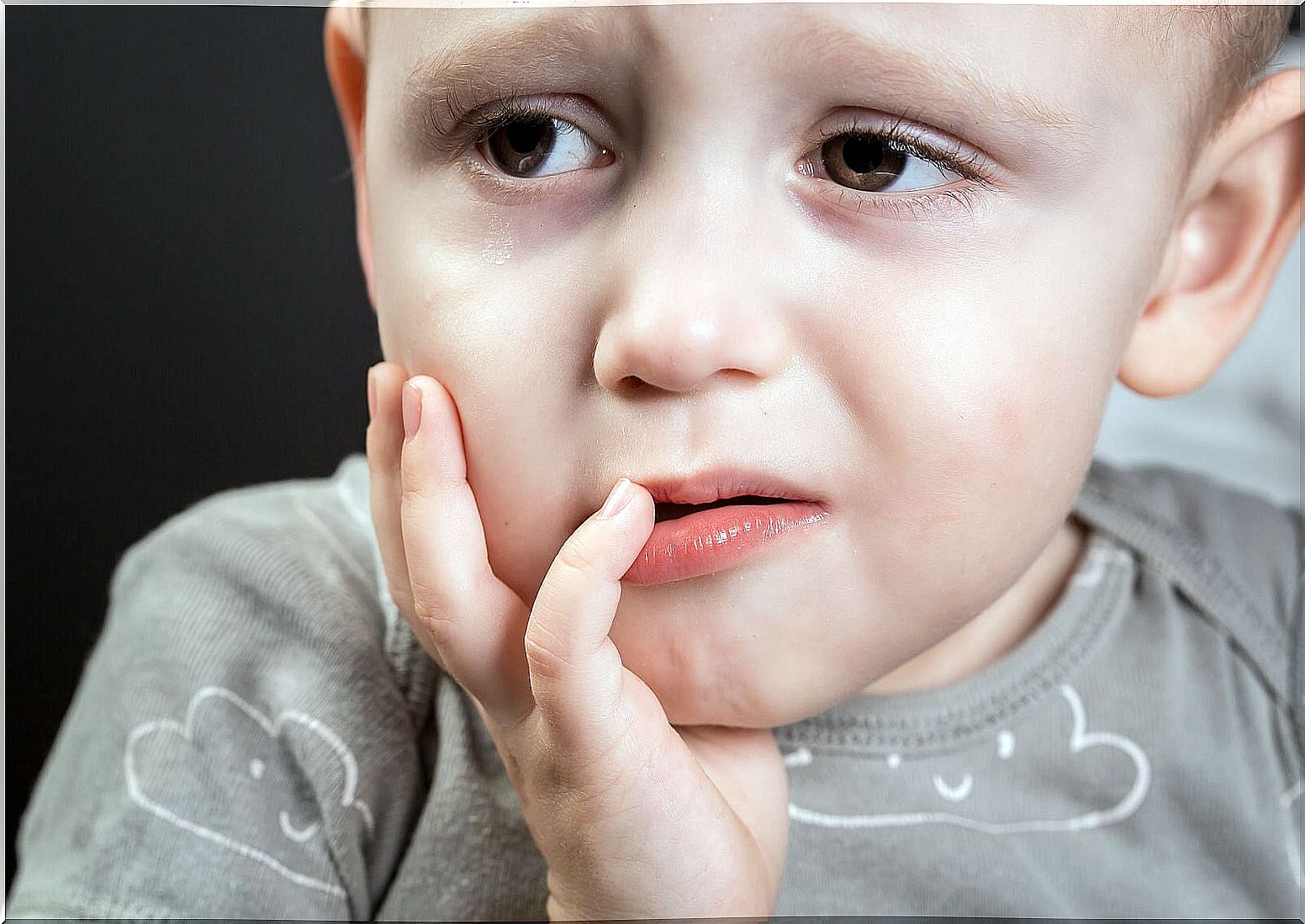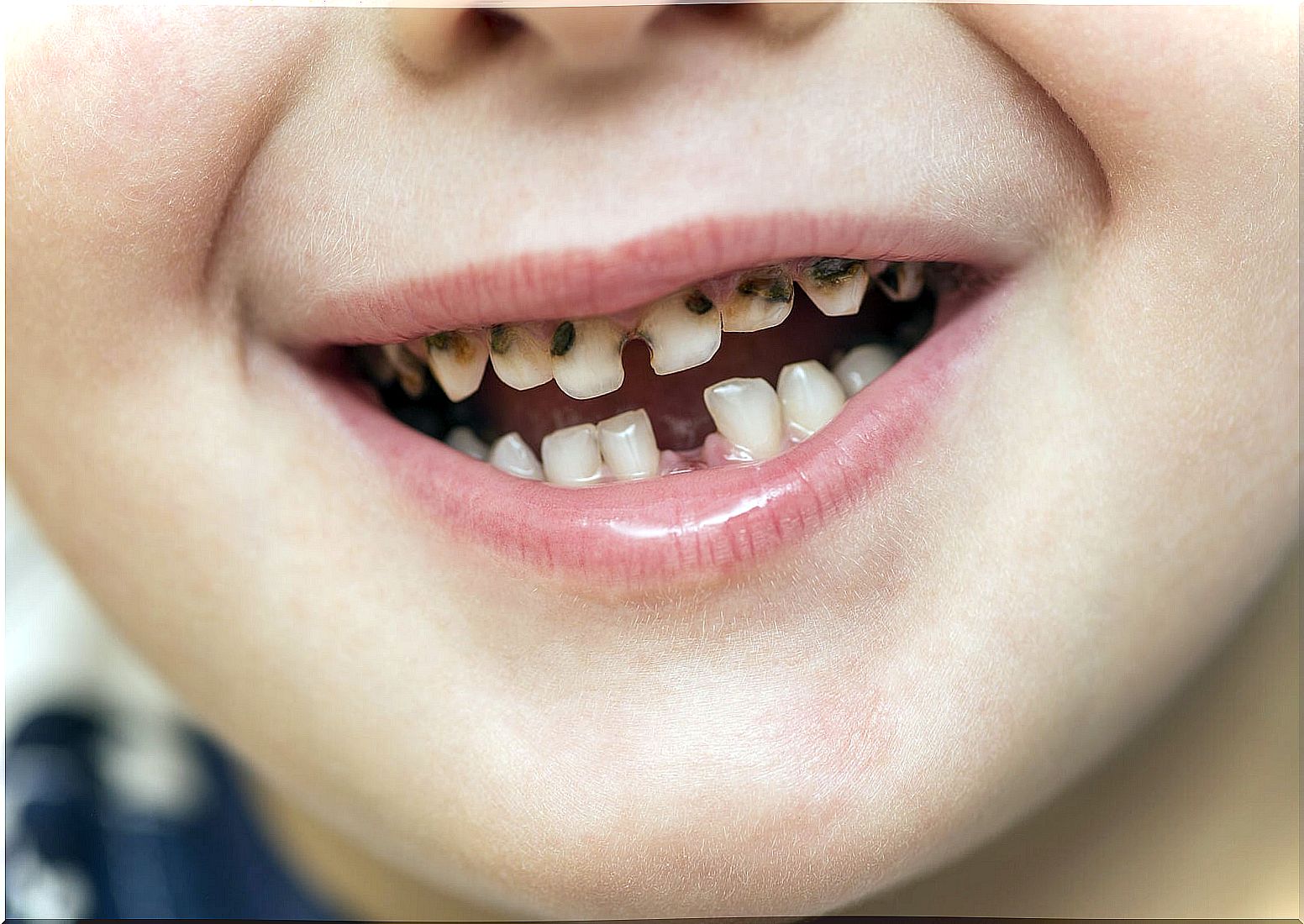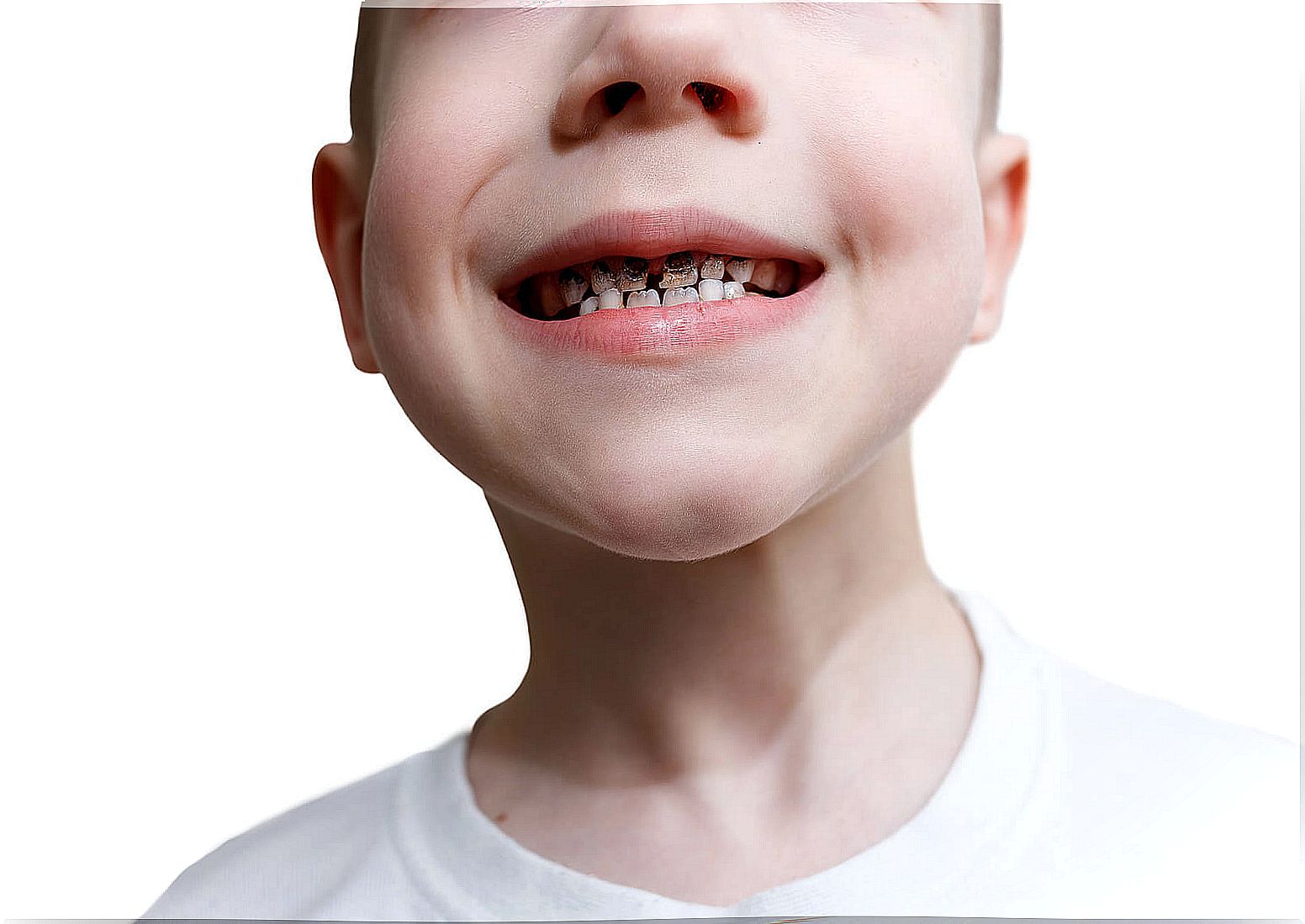My Son Has A Black Tooth: Why And What Can I Do?

Observing a black tooth in a young child’s mouth is often a red flag for parents. Going to the dental consultation immediately is the fundamental step that adults must take to treat this problem.
The normal color of the teeth varies between a very subtle yellowish white or grayish white. But there may be a change of dark color in some of the child’s teeth. This usually happens progressively, so it is vital that parents pay attention to their children’s mouths.
In the following lines we will tell you why black teeth can appear in little ones. Also what should the adult do and how are they treated.
Causes of black tooth in children
The origin of a black tooth in a child is the death of the pulp that is inside. This can be due to multiple causes, although the most common are the presence of cavities or having suffered a blow to the tooth.

In both cases, the color change happens progressively. Therefore, it is ideal to consult a dentist as soon as changes in the dental element are noticed, to prevent the damage from being worse.
There are also external factors that can give a dark hue to the dental elements, such as the presence of tartar, stains due to the use of iron and pigment stains from food and beverages. However, it is not the most common in infants.
Dental trauma
During the game or the practice of sports it is quite common for children to fall and hit their mouth. When suffering a trauma, the blood supply of the tooth can be affected.
The dental pulp is the area that is in the center of the tooth and contains the nerves and blood vessels. The blow can inflame it and even interrupt the blood supply, causing tissue death. The tooth will cease to be vital.
Over time, devitalized teeth can darken and turn black. The discoloration of the tooth can be evidenced 2 or 3 weeks after the blow.
This type of condition is very common in baby teeth. It especially affects the upper incisors, as they are the pieces most exposed to blows.
Cavities
Tooth decay is a disease in which bacteria in the mouth produce acids that destroy the hard tissues of the teeth. They will look like spots at first, but if the disease continues, mineral loss will show up as holes in teeth.
When childhood caries progresses to the pulp, it can cause pulp necrosis and devitalization of the dental element. As we already mentioned, a dead tooth can turn dark.
In addition, caries itself can be seen as dark spots and holes in teeth. Decayed baby teeth affect the permanent teeth that are forming underneath. Therefore, as soon as a change in color is noticed in the teeth of the little ones, it is necessary to consult the dentist.

What to do if the child has a black tooth?
When observing the first color changes in a child’s tooth, it is best to go immediately to the pediatric dentist. The professional will assess the situation and oral health to choose the best treatment.
At the oral exam, the dentist will look for other symptoms, such as pus, mobility of the tooth, pain, or tenderness. It is important to remember if the tooth has suffered a blow and to let the professional know if the child has had pain, swelling or a pinpoint of pus on the gum up to that point.
With all these data, the dentist will be able to assess the severity of the case and determine how to act.
Black tooth treatments
As we have already said, the choice of the appropriate treatment for each case will be determined by the dentist. Depending on the cause of the black tooth, it will be the chosen therapy. Among the available options are the following:
- Pulp necrosis in a milk tooth : if the black tooth was caused by the death of the pulp, the dentist will determine if there is an infection or not. If there is an associated infection, it is reversed with a root canal treatment or with the extraction of the tooth. In some cases, the use of antibiotics may be necessary. If there is no infection, these two treatments are also carried out or an expectant behavior and periodic controls are maintained until the piece of milk falls on its own.
- Pulp necrosis in a permanent tooth : the dentist will evaluate the degree of formation of the root of the piece through X-rays. Canals treatments, in some cases with special methods, are the therapy of choice to avoid extracting the tooth. When the little one is older, the aesthetic factor can be treated with whitening or veneers.
- Caries : when the black tooth is caused by the presence of cavities, it is necessary to treat it. The dentist removes the affected area with rotary instruments and fills the space left with fillings.
- Tartar or stains : if the black tooth is due to stains, stains or tartar, a dental cleaning carried out by the professional will be enough to restore the normal coloration to the tooth.

How to prevent the appearance of a black tooth?
The sooner a discoloration of a tooth is treated, the better the prognosis. Therefore, taking the child to the dentist periodically, every six months, can help detect any problem in the mouth that parents sometimes cannot see.
In case a child bumps his mouth, it is always advisable to go to the dentist. As harmless as the blow may seem, the dentist is the ideal person to assess the situation and act accordingly.
Removing plaque helps prevent cavities, stains, and tartar. Brushing your teeth three times a day with fluoride toothpaste and supplementing with floss and rinses is vital to keeping your mouth healthy.
A healthy, varied diet with little sugary food content is also of great importance. In the event that children practice sports or activities that predispose them to falls, wearing a mouth guard is very useful.
Sometimes the appearance of a black tooth cannot be avoided. However, with these tips in mind, your little one’s mouth may be healthy and their teeth will have fewer opportunities to change color.










